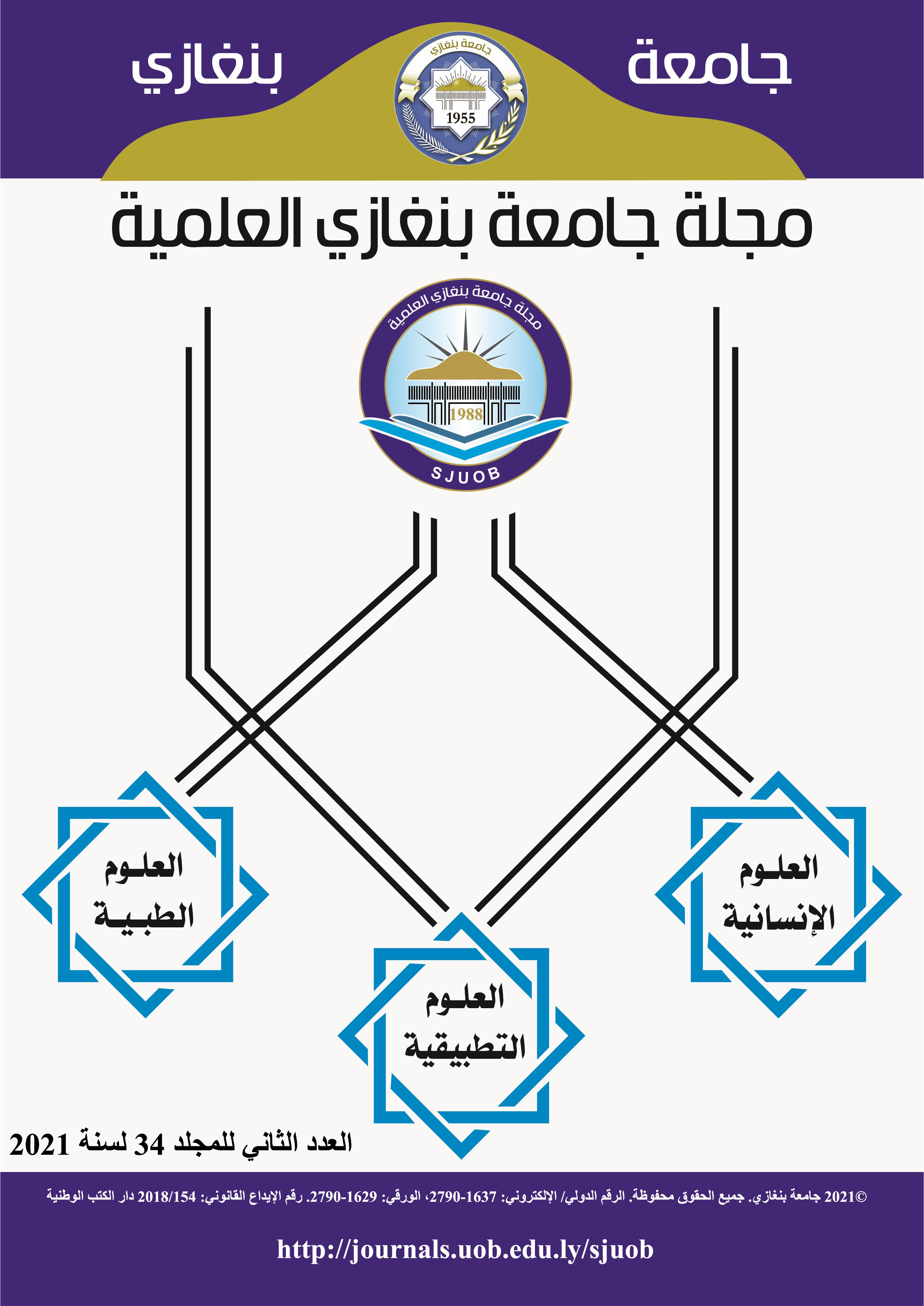Bacterial Profile of Urinary Tract Infections and Antimicrobial Susceptibility Patterns among Pregnant Women at the Benghazi Medical Centre, Benghazi/Libya
DOI:
https://doi.org/10.37376/sjuob.v34i2.3231Keywords:
urinary tract infection (UTI); pregnancy; bacteria; anti-microbial Resistance (AMR)Abstract
Urinary tract infection (UTI) is one of the most common diseases caused by bacteria during pregnancy, and it can create serious consequences for both the fetus and the mother, necessitating early detection and prevention of problems. The study aimed to isolate and identify urinary tract infections bacteria among pregnant women at the Benghazi Medical Centre. Initially, a sectional descriptive design was used on 200 pregnant women who attended the Obstetrics and Gynecology Clinic at the Benghazi Medical Centre from June 2018 to October 2018. A purposive sample was employed to collect data utilizing a structured interviewing questionnaire and laboratory test records. Bacterial infection during pregnancy was more frequent within the age range of 25 to 35 years with 25 out of 44 patients (56.8%). The second trimester of pregnancy was the time period most related to the infection with 23 patients (52.3%). The results also showed that housewives were more susceptible to the infection (28 patients; 63.6%). Several varieties of bacteria were related to UTIs during pregnancy including Escherichia coli (56.8%), which was the most frequently isolated pathogen followed by S. aureus (25%), Enterococcus (9.1%), Klebsiella (6.8%) and Staphylococcus saprophyticus (2.3%). Antibiotic sensitivity revealed that the response to antibiotics was variable; most of the isolated pathogens were sensitive to the tested antibiotics specifically to ciprofloxacin and levofloxacin. The isolated bacteria that were sensitive to all the used antibiotics included Escherichia coli and S. saprophyticus. Antibiotic resistance was increasingly seen in amoxicillin, azithromycin, and erythromycin. To avoid UTIs during pregnancy and the complications of infection, which could lead to fetal loss, all pregnant women should be routinely screened for UTIs with urine culture and treated with the appropriate antibiotics as needed as well as reducing the risk of developing a urinary tract infection by increasing the level of cultural awareness. Women confront double dangers with UTIs; the danger of the disease and the risk of anti-microbial treatment. Pre-natal connection to the baby is highlight when preparing to make this choice, weighing both the shorter-term risks from UTIs and the longer-term dangers from anti-microbial use, particularly the chance of AMR.
Downloads
Downloads
Published
How to Cite
Issue
Section
License
Copyright (c) 2022 The Scientific Journal of University of Benghazi

This work is licensed under a Creative Commons Attribution-NonCommercial-NoDerivatives 4.0 International License.



















